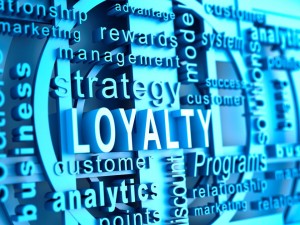 It seems like every retailer nowadays has a loyalty program. From the local coffee house to “big box” national retailers to almost any online merchant, everyone has a loyalty program. But do people really want them? It turns out the answer is yes – a resounding yes. But are those programs actually what drive loyalty, or is something else driving behavior?
It seems like every retailer nowadays has a loyalty program. From the local coffee house to “big box” national retailers to almost any online merchant, everyone has a loyalty program. But do people really want them? It turns out the answer is yes – a resounding yes. But are those programs actually what drive loyalty, or is something else driving behavior?
That question loomed on my mind this year as I had the opportunity to work with two organizations to research customer loyalty - one project focused on the enterprise view, and other to get the consumer view. For the consumer view, I had the privilege to work with graduate students from Northwestern University’s Kellogg School of Management, and that study confirmed a few suspicions I had about customer loyalty programs. And it’s a combination of good news / bad news.
The Bad News
Let’s start with the bad news and get it out of the way. It seems that consumers have come to expect loyalty programs, so in many situations not having one may put you at a disadvantage if your direct competitors have such programs. The other bad news is that so many loyalty programs are tied to discounts and have been aggressively promoted as such that it’s the benefit that consumers associate most strongly with loyalty programs. So, the upshot is that with a loyalty program in place you’ll need to figure out how to operate on slimmer margins, or make other accommodations.
The other bad news is that loyalty programs designed to keep the customer coming back do little to trump a bad customer experience. As a result, retailers must first ensure that they are delivering quality shopping experiences before offering perks for return trips. So as they are designed today, do loyalty programs actually engender loyalty? Apparently not, according to the Kellogg study – it’s a combination of factors.
The Good News
It’s not all doom-and-gloom, however. The good news is that the combination of factors to drive loyalty have many elements that are within your control. And which factors matter depends on the type of retailer you are and what your customer base looks like. Do you emphasize convenience? Low prices? Personalized service? Are your customers “necessity shoppers,” “practical shoppers,” or “pleasure shoppers?” All those factors emerged in the research and are explored in the report.
But one clear conclusion from the study was that experience matters most – so delivering a good customer experience should be your primary focus through all interactions with your customers (including your loyalty program). Then from there, it’s a question of reviewing your customer-facing processes and aligning internally so what your customers experience are both consistent and in line with what’s expected. And unless you are a mom-and-pop shop with a limited selection, you’ll need more than a spreadsheet to understand what your customers expect and how you’re delivering on your brand promise.
More good news
The proven way to get a full view of your customers across all channels no matter where they are in their purchase journey is to use marketing analytics. Those same analytically-driven marketing solutions can also be used to orchestrate your customer interactions across your organization and to inform them in real-time as is often the requirement. Want proof? Read these use cases on Staples, Macy’s, Oberweis Dairy and the luxury goods flash-sale retailer Gilt.
Or you can start by downloading the Kellogg School’s report, Shopper Insights to Improve Retail Loyalty Programs. Another option is to tune in to a December 2, 2015 webinar produced by Loyalty 360, which will highlight the findings of the Kellogg School study and the parallel enterprise-focused study we sponsored this year with the International Institute of Analytics.
And as always – thank you for following!

2 Comments
John,
Really enjoyed the read. Business that make it about the money (via) discounts are sure to fail. According to Cap Gemini 77% of transaction-based loyalty programs fail.
Its all about the experience, baby!
Thanks, Darren! It really is all about the experience. Our business is B2B and not transactional, so the idea of our customers' experiences is different than that of the retail loyalty programs we studied and you might think what those studies found would be less applicable to what I do here at SAS, but the opposite is true. Focusing on the customer experience is always going to provide the best guideposts for planning and executing better marketing.